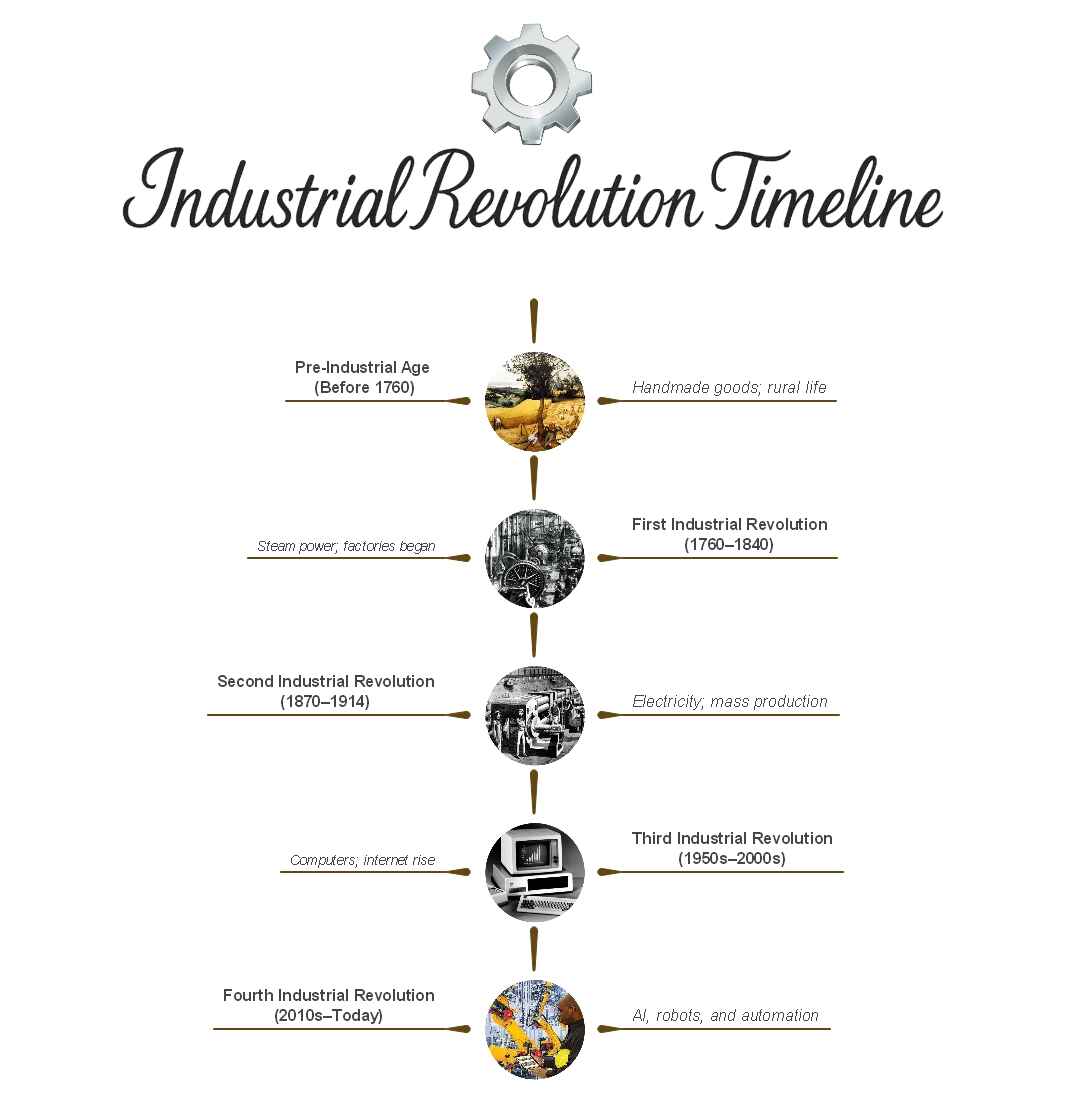Before TikTok trends and self-driving cars, there were steam engines and spinning wheels. Sounds ancient, right? It kind of is - but it's also the reason we have everything we do today. The Industrial Revolution kicked off a chain of game-changing inventions that transformed the world, one machine at a time.
From smoky factories to AI innovations, each era brought something new - faster tools, smarter systems, and bolder ideas. This timeline isn't dusty history. It's a highlight reel of how we got from horse carts to hyperloops. So, are you curious how we leveled up over the centuries? Get ready. The journey is wild, and the future is just getting started.
In this article
Part 1: Industrial Revolution Timeline
The Industrial Revolution is broadly divided into four major phases, each characterized by significant technological and societal shifts. Each new phase brought faster tools, smarter systems, and deeper impact. Electricity lit up factories. Computers automated them. Now, AI is running the show.
This timeline breaks it all down. Simple. Straightforward. And honestly, kind of mind-blowing when you see it all together.
Pre-Industrial Age (Before 1760)
Life before factories was simple, slow, and seasonal. Most people lived in small villages and worked as farmers, weavers, or blacksmiths. Items were made by hand or in small workshops. The pace of life was tied to daylight and harvests.
But as cities grew and coal became a popular energy source, demand rose. Innovation started to spark change. Philosophers talked of progress. As Voltaire once said, "Appreciation is a wonderful thing. It makes what is excellent in others belong to us as well."
By the early 1700s, Britain's population and trade network were booming. The world was on the edge of something huge.
First Industrial Revolution (1760-1840)
This was the era that kickstarted it all. It was a transformation powered by steam and driven by textiles. Beginning in Britain, the Industrial Revolution changed how goods were made: faster, cheaper, and in bulk.
Factories replaced home-based crafts. Cotton mills sprang up across northern England. Towns swelled. Workers flooded into the cities. It wasn't just progress - it was revolution.
Here are the four major inventions that reshaped production in this era:
- Steam engine (powered factories, trains, and ships)
- Spinning jenny (spun multiple threads at once)
- Power loom (mechanised weaving)
- Telegraph (enabled near-instant communication)
But this new world had a dark side. Much of the raw cotton came from slave plantations in the Americas. Working conditions in factories were grim. Still, the age of industry had begun.
Second Industrial Revolution (1870-1914)
By the late 19th century, industry had scaled up dramatically. Known for its buzz of invention and big business, this was the golden age of electrification.
The United States and Germany surged ahead. Electricity lit up cities. Railroads stitched countries together. Giant factories mass-produced everything from cars to canned food. "The only source of knowledge is experience," said Albert Einstein - and this was a time of rapid learning.
These major inventions defined the momentum:
- Lightbulb (brought power to homes and factories)
- Internal combustion engine (led to cars and planes)
- Telephone (connected voices across continents)
- Bessemer process (produced steel quickly and cheaply)
Urban populations exploded. Labor was tough, hours were long, and pay was poor. Still, the modern world was taking shape; brick by brick, bolt by bolt.
Third Industrial Revolution (1950s-2000s)
Post-World War II, a quiet revolution began - this time in labs and universities. The invention of the transistor led to microchips, computers, and eventually, the internet. The world was becoming digital.
Production lines became automated. Information flowed freely. Electronics weren't just tools - they became the infrastructure of modern life. As Steve Jobs famously put it, "The people who are crazy enough to think they can change the world are the ones who do."
Key technologies that changed the game:
- Transistor (made modern electronics possible)
- Microprocessor (enabled computing in every device)
- Personal computer (brought digital power to individuals)
- Internet (linked businesses, data, and people worldwide)
Manufacturing shifted to places like China and Southeast Asia, while the gap between tech-rich nations and low-wage workers grew. But the digital age had truly arrived.
Fourth Industrial Revolution (2010s-Today)
We're now in the fourth industrial era. It is the time of intelligent systems. In 2016, Klaus Schwab of the World Economic Forum called it the Fourth Industrial Revolution. But this revolution isn't about replacing humans with machines. It's about giving machines brains.
Artificial intelligence, big data, cloud computing and automation are transforming how factories think. They can predict maintenance, optimize production and adapt in real time.
Here are some of the most transformative innovations from this era:
- Artificial Intelligence (machines that can learn and decide)
- 3D Printing (on-demand, custom manufacturing)
- Self-driving vehicles (autonomous logistics and transport)
- CRISPR (precision genetic engineering)
Still, inequality, climate change and digital exploitation are real challenges. As we move forward, the hope is that smart tech leads not only to efficiency - but also to ethics. After all, the smartest factory in the world is only as good as the society it supports.
Part 2: How to Make the Industrial Revolution Timeline in EdrawMind?
Do you want to turn your Industrial revolution notes into an engaging diagram? Look no further than EdrawMind. This powerful diagramming tool lets you create detailed, aesthetically pleasing timelines in no time.
Here's how to make the Industrial revolution timeline in a few simple steps:
Step 1: Open a New File
- Install and start EdrawMind, or just try EdrawMind online in your browser.
- Sign in by creating a new Wondershare account to get started.
- Or, log in with a social media account.
- Once at the homescreen, click New Mindmap with the + icon to create a new file.
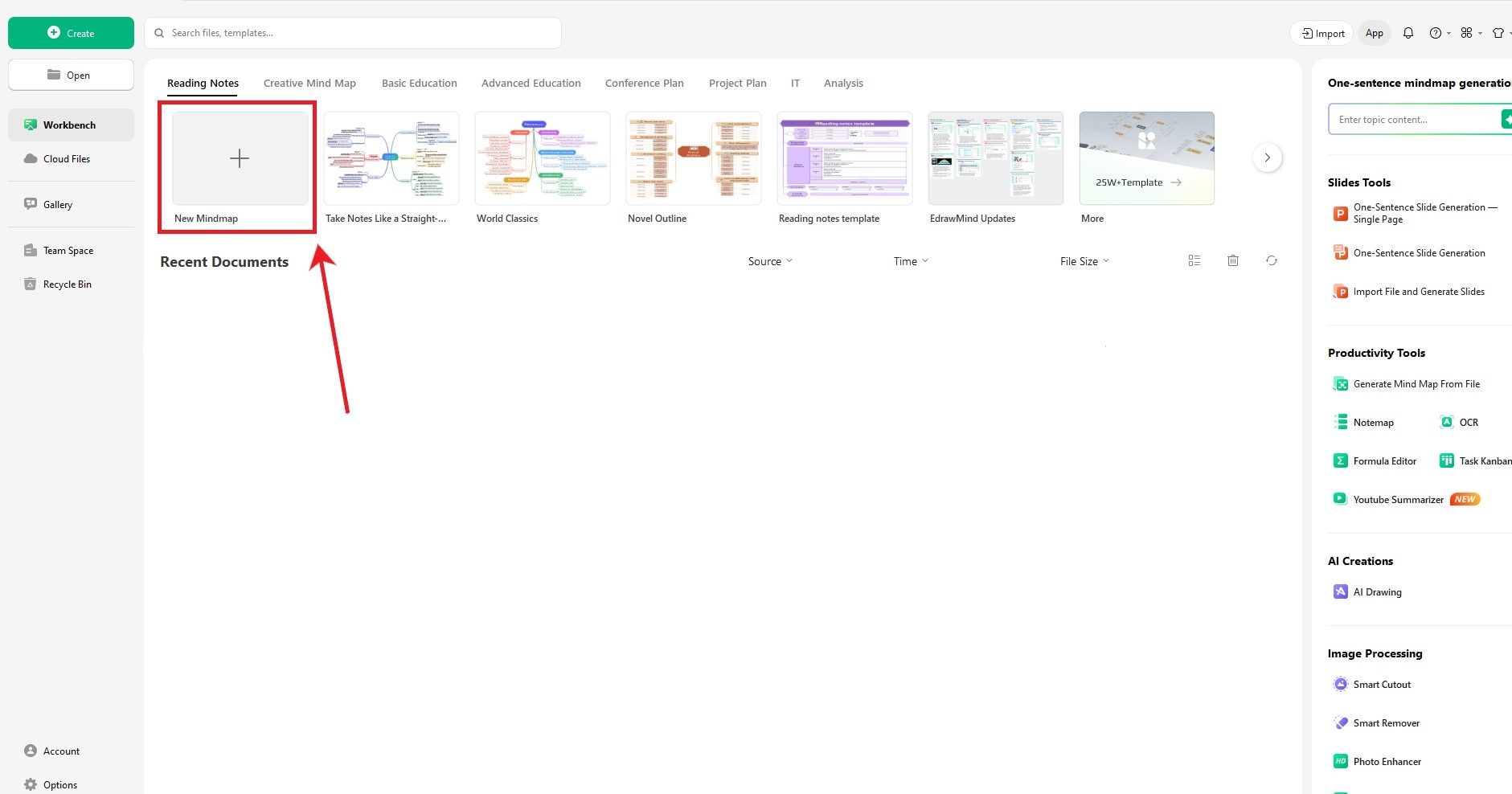
Step 2: Change the Layout
- Click the Main Idea and go to Layout from the floating menu.
- Pick a Timeline layout from the list.
- For this guide, let's go with Timeline (down).
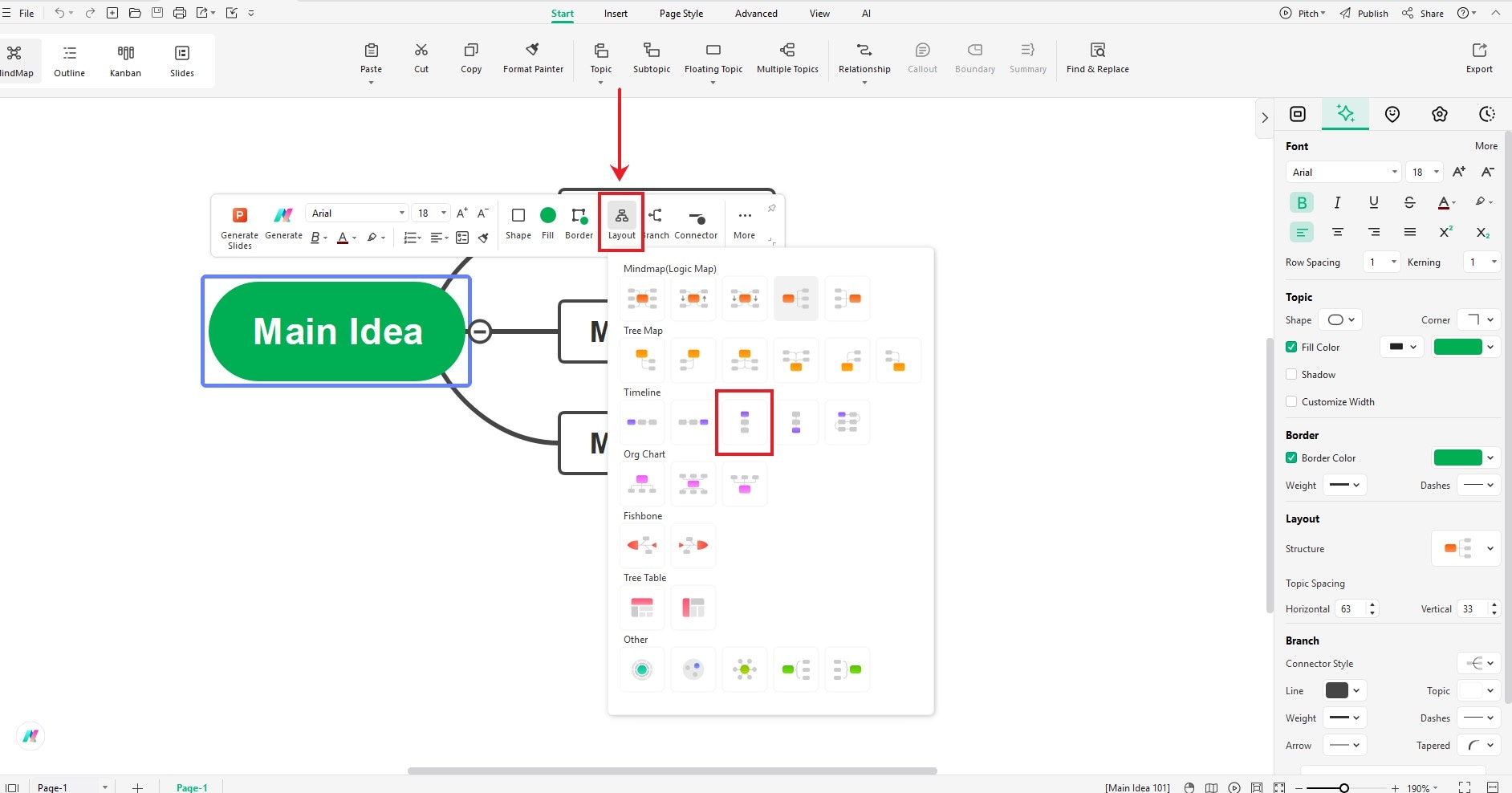
Step 3: Insert New Topics
- Click the Main Idea and select More from the floating menu.
- Click Topic to add a new entry at the bottom of the timeline.
- Similarly, select Floating Topic from the list and click anywhere to add it.
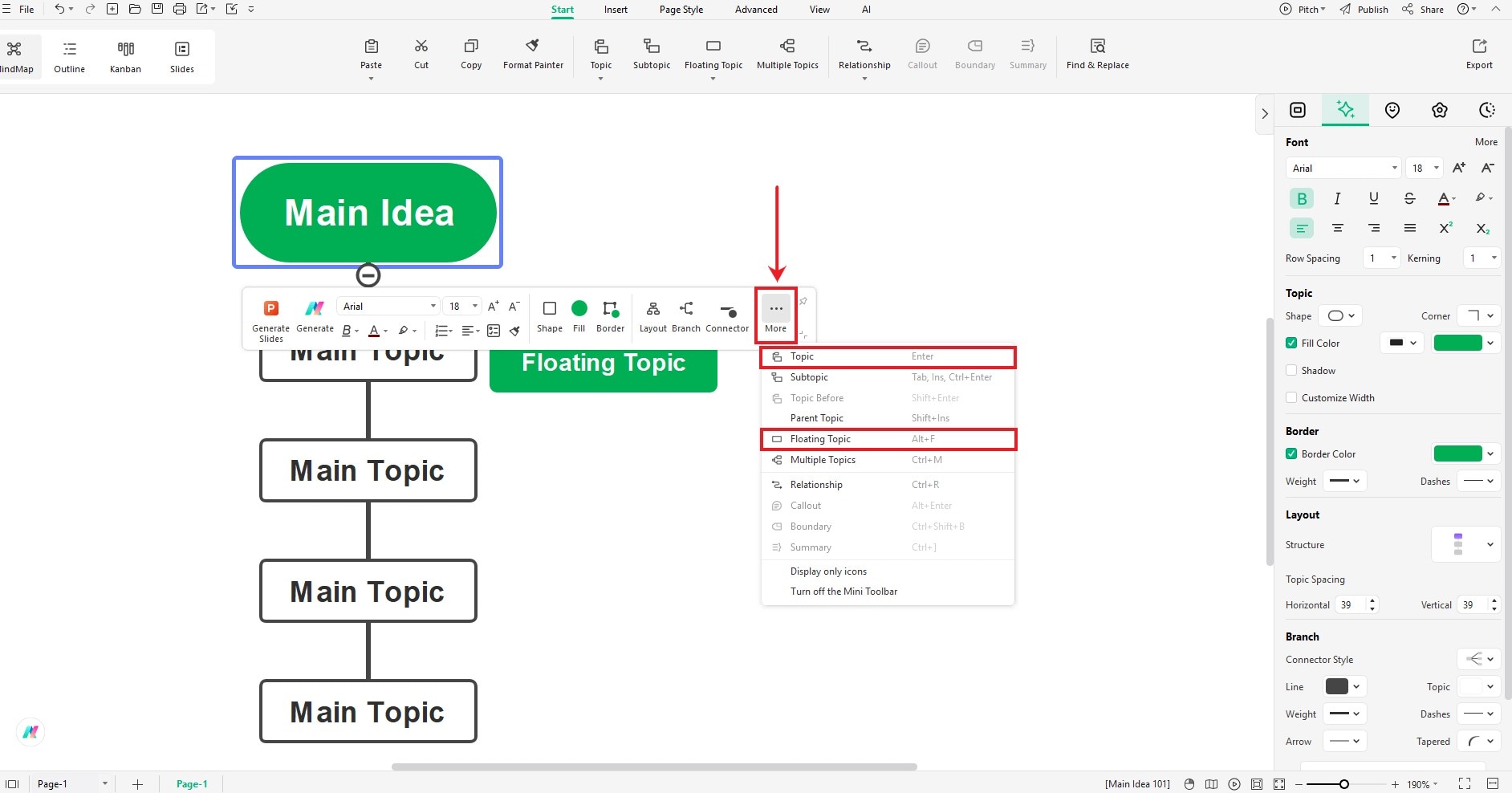
Step 4: Customize the Timeline
- Customize one topic or the entire timeline at once from the floating menu and the right toolbar.
- You can customize the color, border, branch settings, and shape of the topics.
- Click any topic and start typing to enter new content.
- Use the floating menu to customize the font settings.
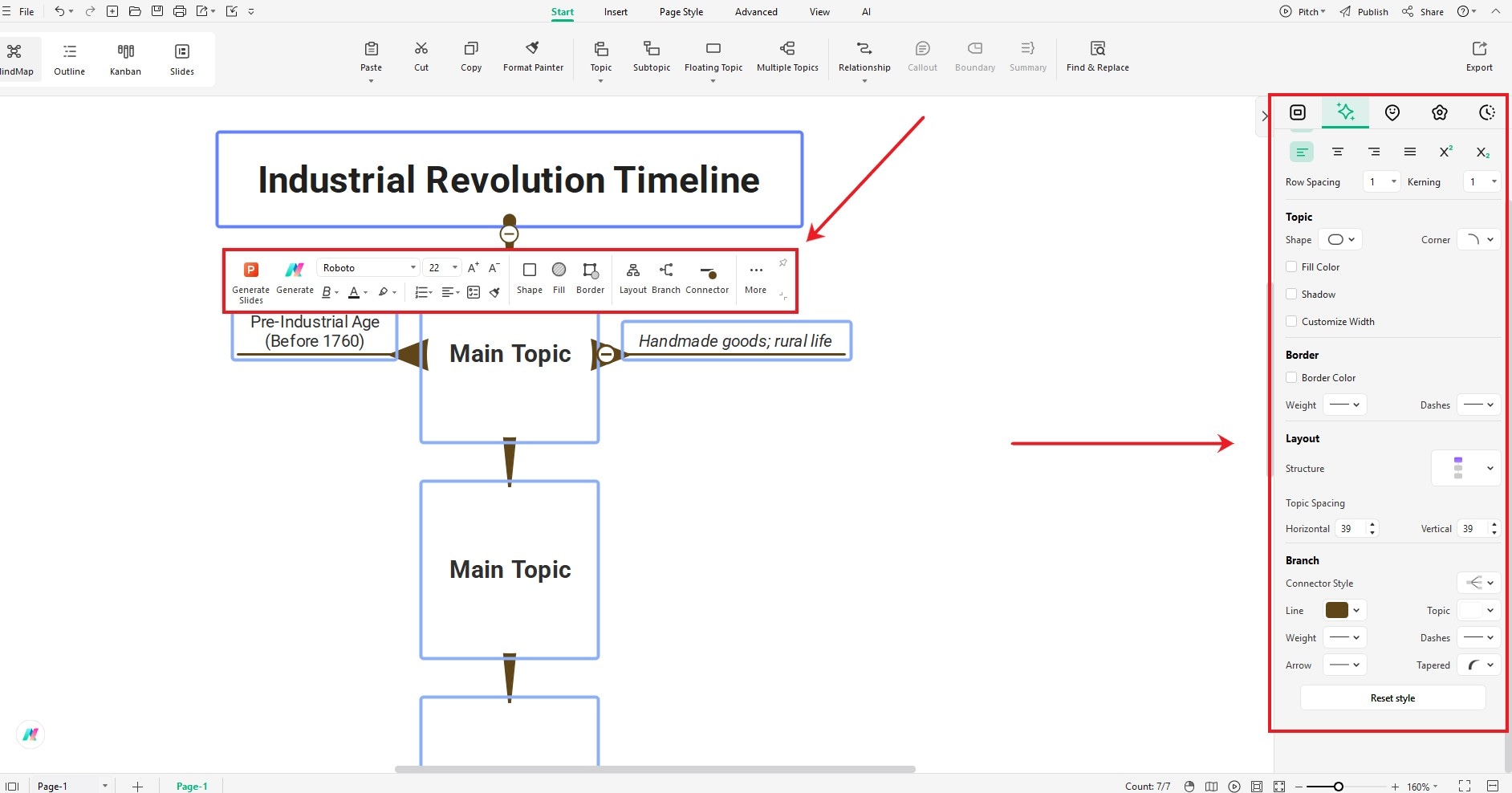
Step 5: Incorporate Images
- Download an image and open it in EdrawMind.
- Customize the image settings from the floating menu and the right toolbar.
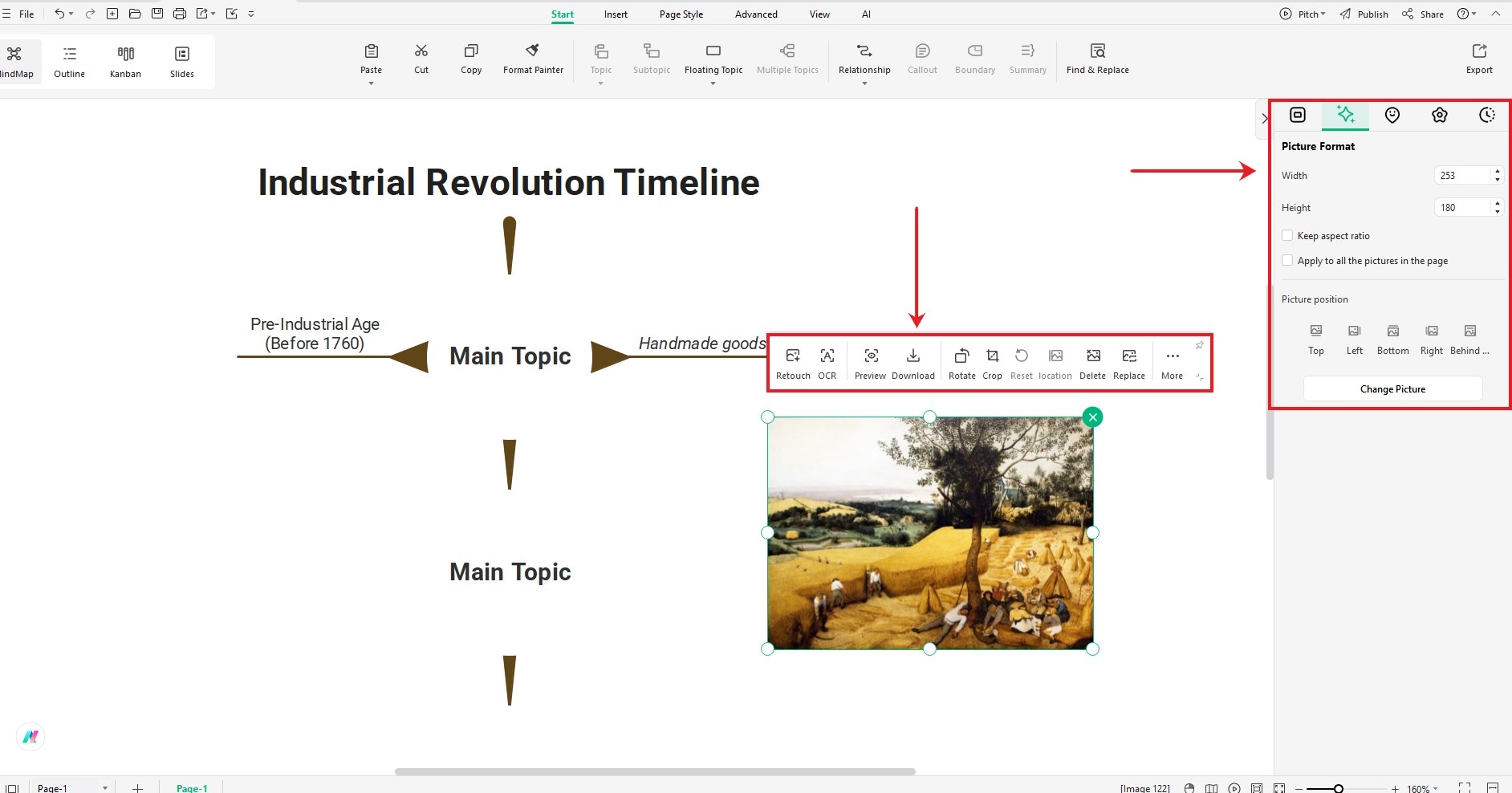
Bonus Step: How to Reshape an Image?
- Open the image you want to reshape in EdrawMax.
- Select the image and click Crop to Shape from the floating menu.
- Position the image in the frame to crop it correctly.
- Now, you can copy and paste it back in EdrawMind.
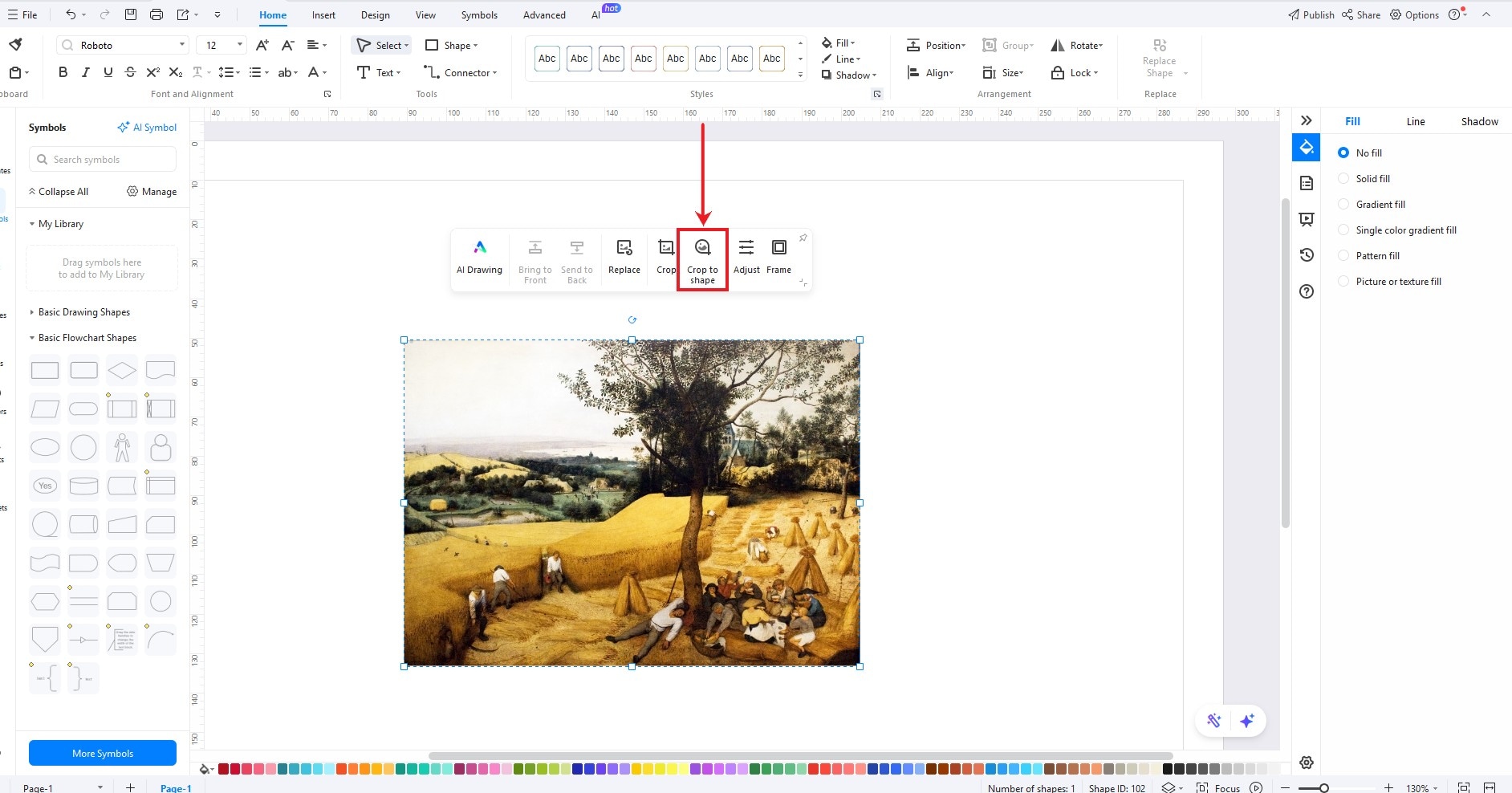
Step 6: Save the Timeline
- Go to File > Save and choose the location on your device to download the file.
- Or, click the Export button and choose the required file format.
- EdrawMind offers several export options like PNG, JPG, PDF, SVG, Word, and many others.
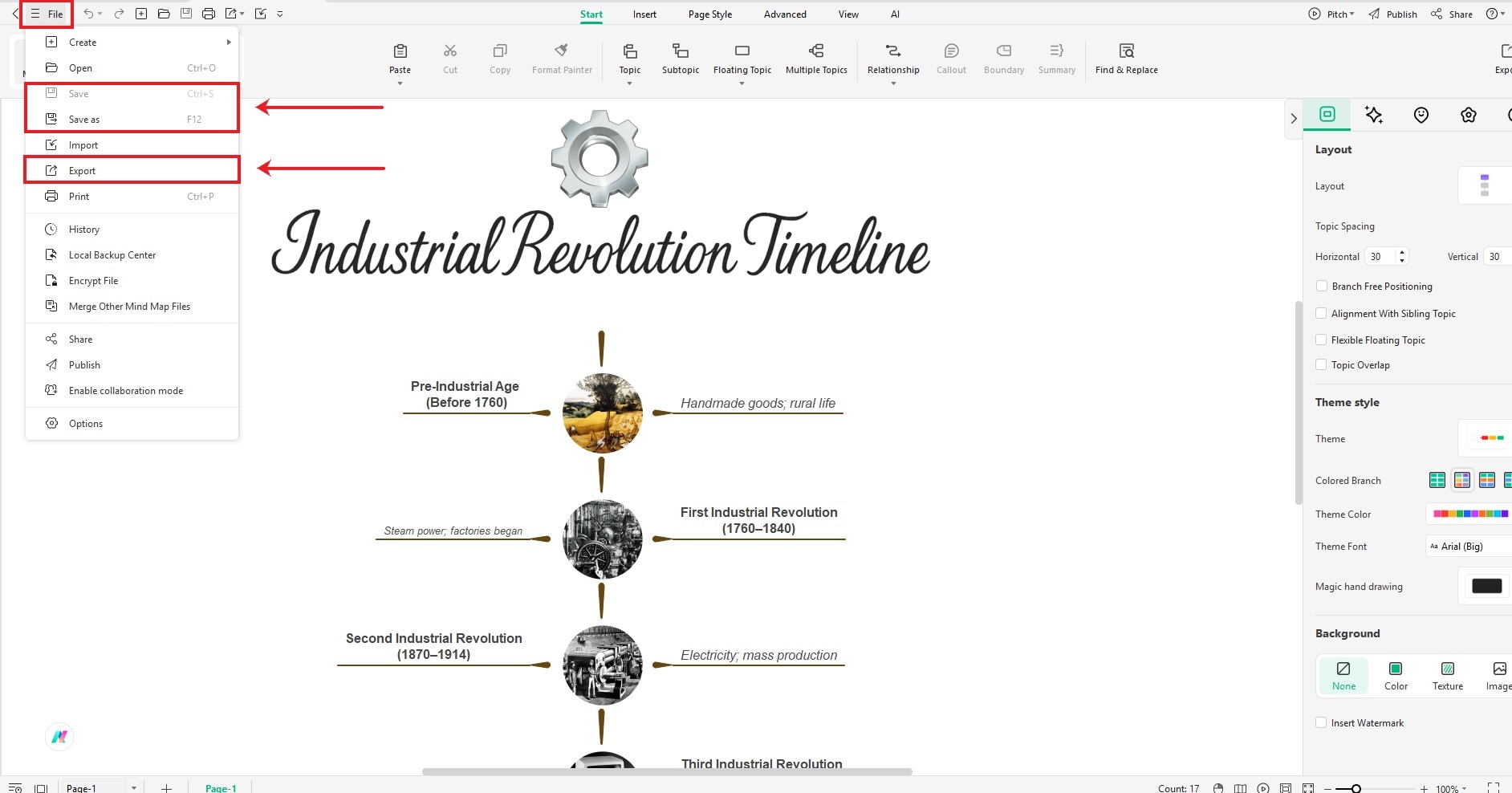
What's Next After the Industrial Revolution?
The Industrial Revolution never truly ended, but it evolved. From steam to AI, each phase reshaped how we live, work, and create. Today, we're in an era where machines learn, factories adapt, and the line between digital and physical is fading fast.
What comes next could be even bigger. Green tech. Quantum leaps. Human-machine collaboration. Understanding the past helps us prepare for the future. And seeing it all clearly makes a difference.
Use EdrawMind to visualize history, organize ideas, and plan what's next - because the next revolution might just start with your mind.



